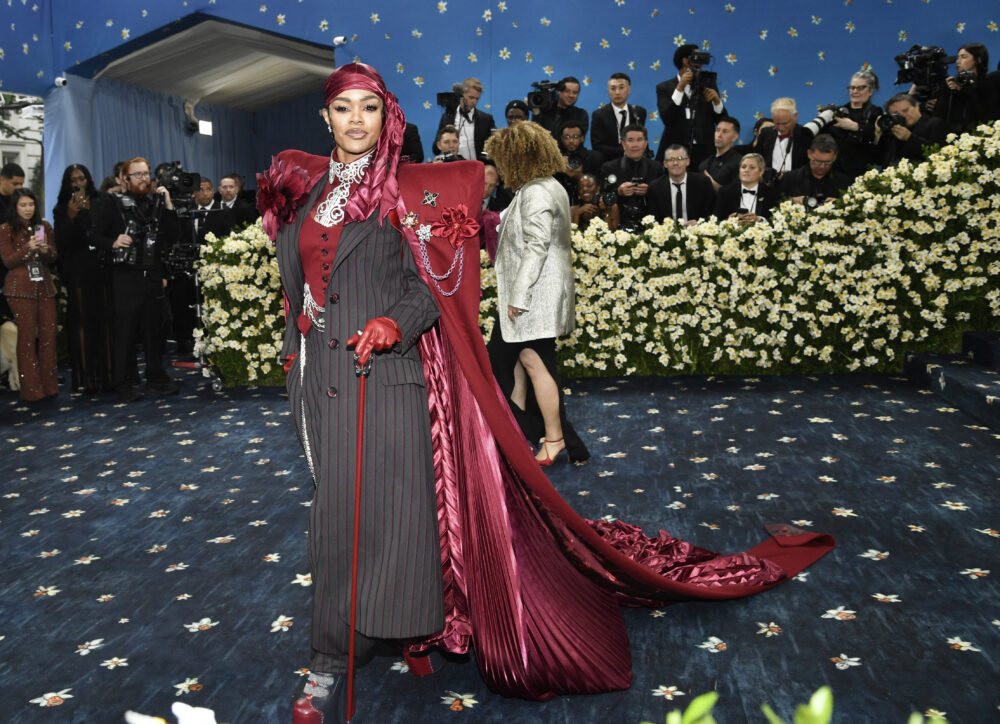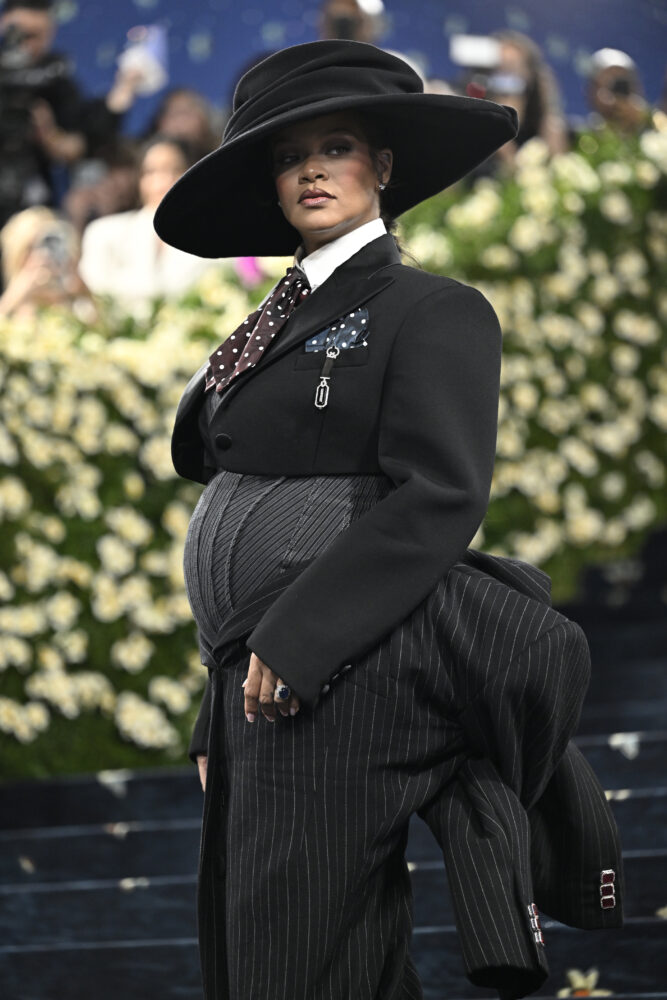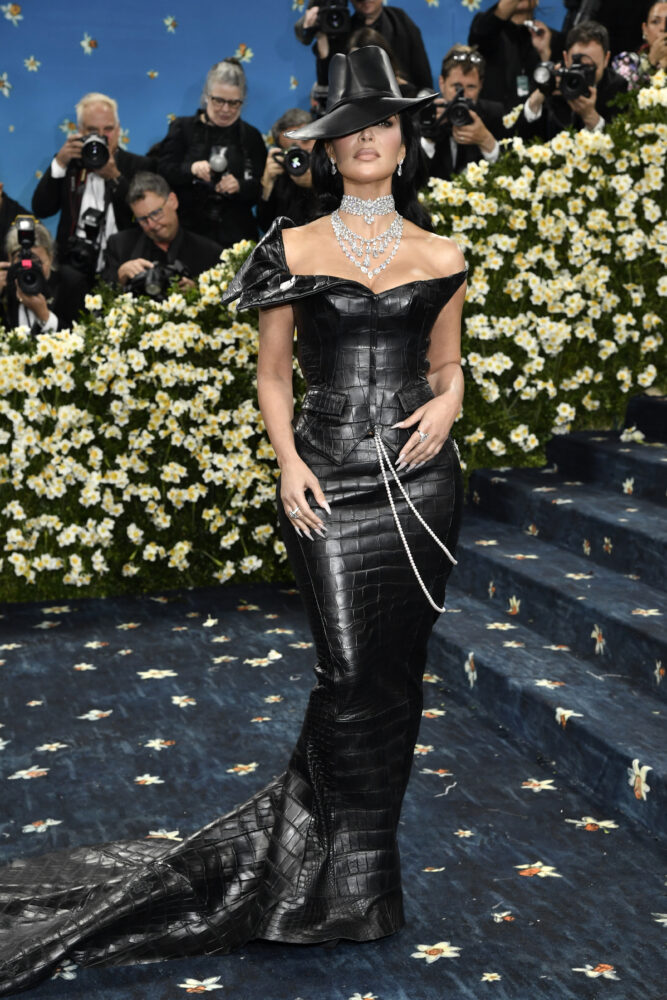Diana Ross attends The MET Gala in New York. (Photo by Evan Agostini/Invision/AP)
On the first Monday of May, under the twilight skies of Manhattan, the steps of the Metropolitan Museum of Art once again transformed into a runway of reverence, spectacle and unapologetic self-expression.
But 2025’s Met Gala was more than a fashion event — it was an offering. An ode. A quiet, rhythmic drumming of history, heritage and healing stitched together with every dart, hemline and satin lapel. This year’s theme, Superfine: Tailoring Black Style, did not merely inspire couture; it ignited remembrance.
The Costume Institute, in a curatorial masterstroke, opened its vaults and imagination to explore black dandyism — a centuries-old tradition where black men and women use clothing to affirm their presence, their resistance and their joy.
Drawing from the work of scholar Monica L Miller, whose landmark book Slaves to Fashion unravels the politics and poetics of black sartorial expression, the exhibit stood as a living archive. It moved like a jazz improvisation — cool, sharp, defiant.
The red carpet became a procession of memory, elegance and intentionality. And, in a year when the world has had to recalibrate its relationship with beauty, the Met Gala felt less like a party than a ritual.
A few women stole the show on the red carpet …
 Teyana Taylor attends the Met Gala. (Photo by Evan Agostini/Invision/AP)
Teyana Taylor attends the Met Gala. (Photo by Evan Agostini/Invision/AP)
Rihanna floated in as if summoned from a dreamscape of fabric and fertility. Her custom Marc Jacobs gown announced her third pregnancy with a tender elegance, the kind only Rihanna could wear without pretence.
The silhouette referenced old-school tailoring — nipped waist, elongated form — but also whispered of future worlds, where motherhood and luxury aren’t incompatible but beautifully entangled.
Actress Zendaya, every inch the goddess of grace and grounding, opted for a stark white Louis Vuitton power suit. It was the antithesis of maximalism and yet it screamed louder than sequins ever could.
Her homage to 1970s black icons — Angela Davis, Nina Simone — was clear in the cut of the jacket, the deliberate polish of the loafers, the softness in her afro pulled back just enough to show defiance.
Zendaya wasn’t there to outshine; she was there to underline.

 Rihanna (left) and Zendaya at the Met Gala in New York. (Photo by Evan Agostini/Invision/AP)
Rihanna (left) and Zendaya at the Met Gala in New York. (Photo by Evan Agostini/Invision/AP)
Teyana Taylor’s look demanded to be heard before it was seen. Co-designed with Oscar-winning costume designer Ruth E Carter, her ensemble referenced the Harlem Renaissance in palette and texture: lush velvet and brass buttons.
Taylor, never one for subtlety, offered a performance through cloth.
In a softer lane, Kim Kardashian arrived in a body-hugging number that married her signature silhouette with a tailored elegance unfamiliar to her usual Met appearances.
The dress spoke quietly, but convincingly, reminding the audience that tailoring isn’t just for tuxedos — it can caress curves, contour ambitions and shift the body from object to subject.
What was perhaps most moving about the evening was the return of Diana Ross to the Met steps after more than two decades.
She glided in, wrapped in a family-embroidered white gown with a 5.5m train that seemed to carry the weight of memory itself. A living icon draped in ancestral pride, Ross didn’t walk the carpet — she danced across it. Slow. Sure. Sovereign.
 Kim Kardashian at the Met Gala in New York. (Photo by Evan Agostini/Invision/AP)
Kim Kardashian at the Met Gala in New York. (Photo by Evan Agostini/Invision/AP)
The beauty of it was how this year’s theme allowed everyone to find their place in the narrative. From Sabrina Carpenter’s youthful, tailored Louis Vuitton look to Hailey Bieber’s sharp Saint Laurent ensemble that called back to the clean lines of Eighties Yves, there was a sense that even those outside the black experience came not to appropriate but to appreciate. They wore tailoring not just as a fashion statement but as a symbol of structure, support and respect.
Yet, the gala’s true resonance cannot be measured in looks alone. The event raised a record-breaking $31 million for the Costume Institute, for exhibitions, conservation and educational programmes.
More than dollars, what the Met Gala did was offer space — for black voices, black designers and black histories that have too often been erased from the larger fashion canon.
Fashion, after all, is not frivolous. It is not detached from struggle, from memory, from migration. Especially for black communities, fashion has always been more than fabric. It is language. Protest. Prayer.
Tailored for You, the evening’s dress code, went beyond a call to wear bespoke pieces to a philosophical prompt, an invitation to wear your history with care. To let the garments you choose tell a story deeper than trend. And people listened. People heard.
As the last flashes faded and the steps of the Met emptied into silence, what lingered was not the glam but the gratitude. Gratitude that black style — often imitated, seldom credited — was given its rightful space in the halls of America’s most hallowed fashion institution. And not as a trend, but as a lineage.
The 2025 Met Gala was not perfect. No event of this scale can be. But it was honest. It was intentional. And for one evening, beneath a sky full of flashbulbs and expectation, fashion remembered its soul.